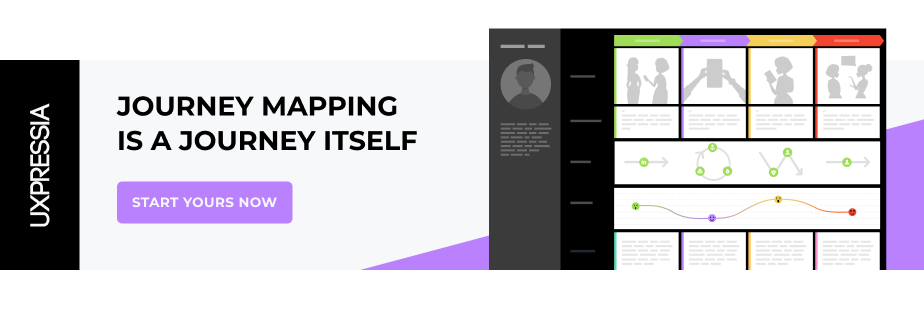If you have ever lost a customer, and chances are you have, you know how frustrating it can be. And even more so, if you don’t know why that happened in the first place.
Today’s topic is preventing customer loss through the use of journey mapping. To share her wisdom on that problem with us, we invited Leanne Elich, an industry expert with over 20 years of experience in persona creation and journey mapping. As a business and sales psychologist, Leanne studies closely how people behave, what drives their purchase decisions, and what happens along the way.
Without further ado, let’s get down to the nitty-gritty.
Contents
The ultimate goal of a business is to occupy a unique space in the competitive market that is considered iconic and superior in the hearts and minds of consumers. But to do that, we need to gain a better understanding of our customers and their journeys.
According to consumer psychology studies, 70% of customers leave their carts empty. This goes hand in hand with research carried out by Leanne that showed that the majority of people close 3 out of 10 sales. But what happens to that 70%? What stops them from actually purchasing?
There are different reasons for customer loss. Let’s take a look at the major challenges.

1. Understanding the minds of customers
It is really tricky to understand what our customers are thinking, but with the help of customer journey maps, we can actually plot the way that someone thinks and behaves from a trigger or awareness to purchasing and beyond.
2. Decision-making triggers
We need to understand what decision-making triggers are and how we can use them in our map.
3. Lack of time and attention
We commonly make mental shortcuts because we don't have time to assess everything that's put in front of us before deciding. That’s why we need to make sure we provide an efficient and streamlined process with no barriers to purchase where customers can easily reach their goals.
4. Ignoring competition
Being immersed in our businesses, we sometimes forget that we have competition. And if we have a customer who doesn’t follow the entire customer journey to the end, they are clearly going somewhere else — to your competitors. It’s important to keep an eye on your competitors and see what’s working for them and what’s not.
5. Lack of confidence and skills in upselling and cross-selling
Many people are afraid of being too pushy and sounding too salesy. The thing is you don’t need to be pushy but you need to find ways and have the confidence to be able to upsell and cross-sell.
6. Too much emphasis on price
Surprisingly, price is not the primary reason for customer loss — experience is. And even if it comes down to price, it’s often because you haven't articulated the value that you can provide for that price.
7. Good ideas = bad ideas
What we think is happening may actually not be what is happening or what is needed. We might think our idea or concept is absolutely genius, but in reality it is detrimental to our business.
8. Underestimating the importance of emotion and behaviors
Being able to understand what the emotions are behind behavior is the foundation of any kind of decision-making.
What is a customer journey map?
Without getting into too much detail, a customer journey map (CJM) is basically a visual representation of the customer's experience and interaction with you, your business, your team, your product, and your service. A CJM helps to understand needs and concerns, and identify motivations and barriers to reaching a goal — making a purchase. By having all phases right in front of you, you can easily see where a customer has dropped off and what has kept them from going all the way to the end. Once you have identified those drop-off phases, you can actually take measures to prevent or reduce the risk of these drop-offs.
CJMs are not linear but bidirectional, cyclical, and multichannel, with many twists and turns. It doesn’t mean that they are complex, but rather that they are not a straight line, from point A to point B.
Most importantly, a CJM is an emotional pathway to solving a problem. Emotions are what make us purchase. When a customer moves from point A to point B, there are a lot of touchpoints, triggers, actions, and behaviors in between where someone can either stay on the journey or drop off.

There have been many studies about decision-making and what we use to make a decision, especially when we're making a purchase. The results are quite interesting — in general, 90% is based on emotion, and 10% is based on logic.
To illustrate the case in point, Leanne provides a vivid example of her buying a pair of shoes. Being into fashion, accessories, and shoes, Leanne already has a cupboard full of shoes, so she doesn’t actually need another pair. But something in the department store, whether it’s a memory, smell, or sound, has triggered her to think that she would like a particular pair of shoes.
When we buy something, there are two things we are trying to achieve — we want to feel good and we need to solve a problem. Buying those shoes has made Leanne feel good, that's the emotion. The purchase also solved a problem because people need something to wear on their feet. But did she need those particular shoes? No, but they made her feel good and had a symbolic meaning. Additionally, when we purchase something, we tend to then justify the purchase. With shoes, Leanne has found multiple reasons to justify her decision — new color of shoes, good height, a nice feel, etc.
Just like in this example with buying shoes, customers are going through these touchpoints, triggers, and emotions. And that’s what we can do to take them on the journey, make them feel good, and solve a problem.
What we think is happening here is one plus one equals two. But in fact, what actually happens is one plus one equals three because we have so much emotional intent when we buy and make a decision that amplifies the solution; so the two becomes the three. And the more positive and fabulous experience you give your customer, the bigger that number is and the more likely they are to stay on the journey, become repeat customers, and refer your business to their friends.

Customer behaviors
But why do people behave this way? There are three main areas: information, social interactions, and psychological factors.

- The information that we receive and interpret affects our behavior and our decision-making.
- Our social interactions that include demographics, psychographics, and the people that we come in contact with change our behavior and decision-making.
- Psychological factors of logic, cognitive thinking, emotions, and culture also influence our behavior and decision-making. And since psychological factors have the most impact, that’s what we want to tap into to create that sense of desire to purchase.
Journey maps
So, why do we use a customer journey map? There are so many steps that a customer goes through that we need to identify and visualize them to be able to adjust and adapt.

Key questions to ask here:
- What is the behavior you are seeing? When you come in contact with a customer or when you are a customer, what is the behavior you're seeing and what is the behavior you're demonstrating?
- Why is this happening? In the previous example, why did Leanne go to the shoes in the shoe department? What was the behavior?
- What are we doing well? So, what did that department store do to engage Leanne?
- What are we missing? If Leanne decided to walk towards the shoe department and then do a detour and end up going out and into another shoe store, what did they miss for her not to engage?
You need to think about the whole scenario, and in order to do that, you first need to build a CJM so you can easily visualize what is happening.
Today, there are many tools that let you build data-driven maps, and UXPressia is one of these tools. The key criteria of a successful CJM include:
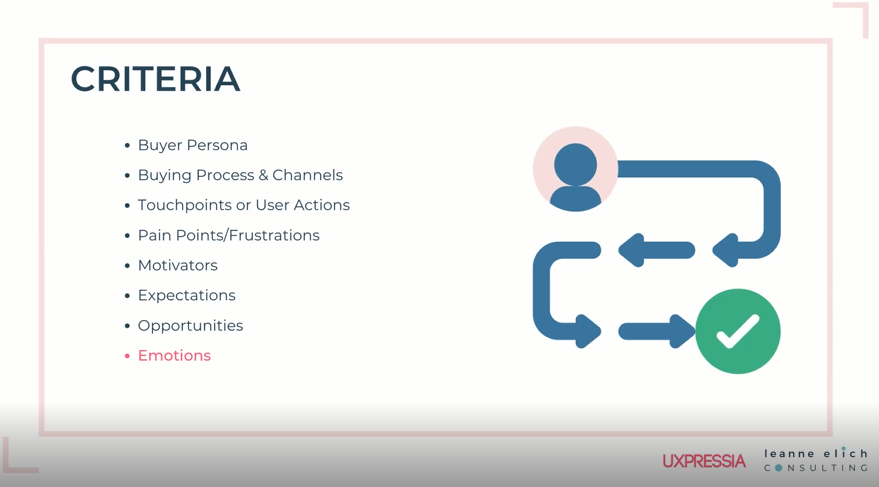
- Buyer persona. Many people think that they just need one persona, but not everyone behaves and thinks the same way. Some people skip through the stages very quickly, some go more slowly and require more nurturing. Some need a more prominent trigger to reach the next stage.
- Buying process and channels. What is the customer doing from the beginning to the end and what are the channels? How are they getting there? And what are the phases?
- Touchpoints or user action. Where can we influence and impact customers? Where can we help them change their mind? Where can we create an environment for them to stick around to the end of the journey?
- Pain points and frustrations. What are a customer’s pain points, but also what are your pain points and frustrations? What is it within your business that has allowed the customer to drop off?
- Motivators. What is motivating customers to stay?
- Expectations. What are their expectations in terms of experience or engagement?
- Opportunities. What are the opportunities for both the customer and yourself?
- Emotions. What’s their emotional journey? How are they feeling? How do they want to think and feel?
Buyer’s journey
A buyer’s journey starts with Awareness when a potential customer becomes aware that they have a problem. This phase is then followed by Desire — the emotion that drives us to make a decision and to act.
When customers feel that intense desire, they start doing Research to better understand and compare their options, while going deeper into Consideration. Then a buyer makes a Purchase, which is followed by some service support or a Post-Purchase phase.
And finally, we want our customers to have such a phenomenal experience that they not only come back for more but also brag to their friends about it, give you reviews and testimonials. That’s the Advocacy phase, which is extremely important for customer retention.

Here’s an example of e-commerce CJM, and the journey is about buying a bike. There are seven phases plus the trigger; it is recommended to keep phases between 5 to 8.
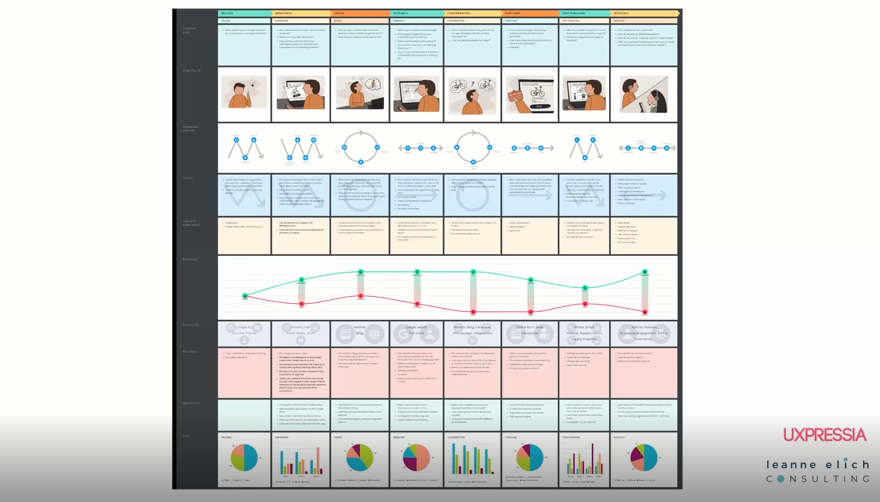
Let’s break this CJM down. The first thing we need to work out is our customer goals because they are imperative as to whether our customer stays with us or not.
1. Customer goals
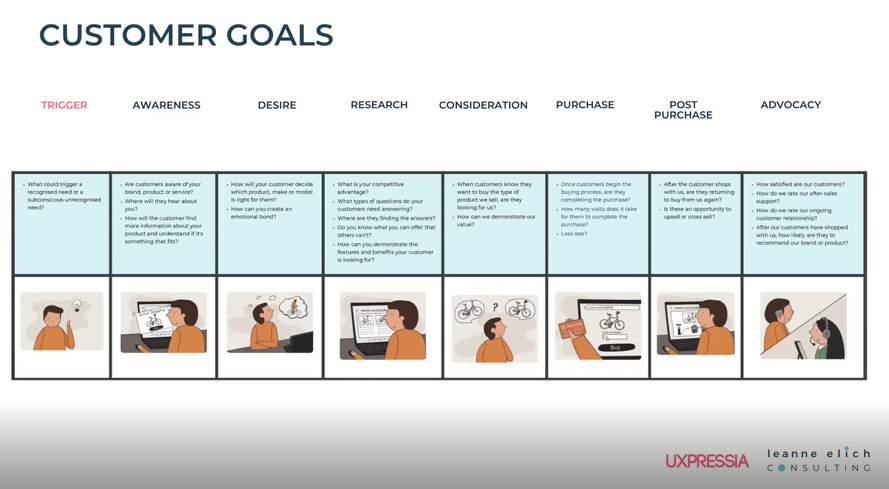
In terms of customer goals and Awareness, are the customers aware of your product, brand, or service? How will they hear about you? If they need more information, where do they go? Moving to Desire, how will the customer decide what's right for them? How do you create an emotional bond?
The Research stage — what's your competitive advantage? What types of questions are your customers asking? What can you offer that others can't? What are they looking for now?
The Consideration stage — when will the customers know that they want to buy? And when they decide, why will they look for you? How can you get them to look for you? How can you demonstrate your value? You need to be able to establish why the bike from you is better than going elsewhere.
The Purchase stage — did customers complete the purchase or did they abandon their cart? Are they part of that 70%? If they are going into a store, how many visits does it take for them to go before making a purchase? What is the loss rate?
The Post-Purchase stage — will customers come back? Is there an opportunity to upsell or cross-sell for them to upgrade, or buy an accessory?
The Advocacy stage — how satisfied are your customers? Do we follow up with the customer and offer them something else? How is your customer loyalty, is there a loyalty program? How likely are they not only to come back but to recommend us to someone else?
2. Channels, processes, and expectations
Channels are the ways we can use to touch or influence the customer in a certain way. In this example, channels include Google, friends, social media, online advertising, a website, a physical store, reviews, etc. Then, the channels used at the purchase stage are a web form or an email confirmation, a warranty, a loyalty card, or a membership card.
As for the processes and expectations, here we need to understand what the customer actually has to do to get from point A to point B, as well as what they really expect. Do customers expect to have a variety of bikes on the website or in the store? Do they expect to have a choice of colors and models? Do they expect to see pricing? What about taxes and shipping costs, do customers expect them to be included in the price? There are a lot of different things you need to address in order to remove barriers and allow your customers to go through the process freely.
3. Pain points, ideas, and opportunities
Talking about pain points, remember that they are not just your customer's pain points, but also pain points within your business that unfortunately can potentially make your customers drop off.
Some questions to consider:
- Was the Google ad clear?
- Was the store correctly geographically located on Google maps so customers could find it?
- Was there enough information?
- Did your website take too long to load?
- Were the prices displayed properly?
- Were you able to include alternative payment methods like PayPal?
It’s very important to identify these pain points not only to understand your customers better, but also to come up with ideas to remove these barriers and roadblocks to facilitate the buyer’s journey.
Starting from the Awareness stage, you can look at all the channels — Google ads, website, social media — to find out what is getting the most traction and what is causing customer loss. You can further analyze your competitors to see where your customers are going when they are not buying from you. At the Purchase stage, do customers check out immediately or after some time? Do they check out at all or do they need more information? Moving to the Advocacy stage, you can analyze how many return customers, referrals, reviews, and testimonials you have, and how many are actually lost.
4. Touchpoints, experience, emotions
This section is really important because we look at how customers feel at each point or each phase of the journey.
In our example above, we have a positive journey (green) and a negative journey (red). When you look at motivations and pain points, what is it that causes the customer to remain on the green journey all the way to the end and beyond? And what distracts them and makes them feel annoyed or even disgusted?
Basically, there are two psychological principles — the peak-end rule and the halo effect. Knowing these principles can help us influence customers at a subconscious level.
The peak-end rule says that we judge an experience based on the peak and the end. If we had a fabulous experience, the peak is super high and at the point where it wasn't as great, it was still reasonable. In this case, we will judge every experience with that company as being great. However, if we have a lower peak and a lower end, we have a negative experience. Even if it is a lower end and then a higher peak, it doesn't matter because we need to have a high peak and a high end all the way to keep customers on that journey.
The halo effect means that one positive experience or positive trait can influence our opinion as a positive experience for everything else. In the shoes example discussed above, the experience was so great that it amplified the total perception of the shoe store. So, when customers have a positive experience that is reliable, important, authentic, trustworthy, they are likely to return.
There are three moments of truth when customers are forming or changing their opinion on your brand, product, or service. Those moments of truth are when a customer first encounters your product, when a customer experiences your product and the customer's reaction to the product, even if it's just mental feedback to themselves.
If we align these moments of truth with the stages of our map, we’ll see the following picture.
The Awareness and Desire stage corresponds to the first encounter with your product, the Purchase stage is when a customer uses your product, and the Post-Purchase and Advocacy stages are when a customer provides their feedback.
Now, let's have a quick look into potential customer loss. To pinpoint the reasons why your customers drop off, ask yourself these questions:
- What are we doing at each phase?
- What is working? What is not working?
- Why is this happening?
- What is the customer's behavior at each of these stages where we are losing them?
- How are they feeling? Is there grief, annoyance, or frustration?
- What are the desires or needs that aren't met?
Opportunities to gain:
- What do we need to start or stop doing?
- What are our competitors doing?
- What is working and why?
- How can we implement a new strategy?
- What resources do we need?
- How would our customers feel if we did all of this?
Mapping a customer journey is a phenomenally helpful exercise to get answers to these questions, but one of the best recommendations is to take the customer journey yourself. Often what we think is happening or the feedback that we expect is not what is happening in reality. When you take a customer journey yourself, you can identify the areas that need improvement and work on them to prevent loss.
Key takeaways: best practices for customer loss prevention
- Survey your customers to understand their buying experience. Ask your customers what they like and what they don’t like about the experience.
- Ask your customer service or support department about questions that they receive most frequently because sometimes these issues can be addressed within the journey. Even a FAQ section on your website can be a valuable source of information.
- Log common customer behaviors and actions. If they are dropping off at a certain point, what is it that's happening? Try to identify the pattern of what’s going on so you can rectify any problems.
- Create a map for each buyer persona. Not everyone thinks the same way and makes the same decisions.
- Review and update your map every quarter or after every major product or service release. This is important in order to stay on top of things and keep improving your CJM.
- And last but not least, take the customer journey yourself.
Bonus: the recording
Prefer watching to reading? Watch the recording of Leanne’s talk at our recent event (the Q&A session is included).
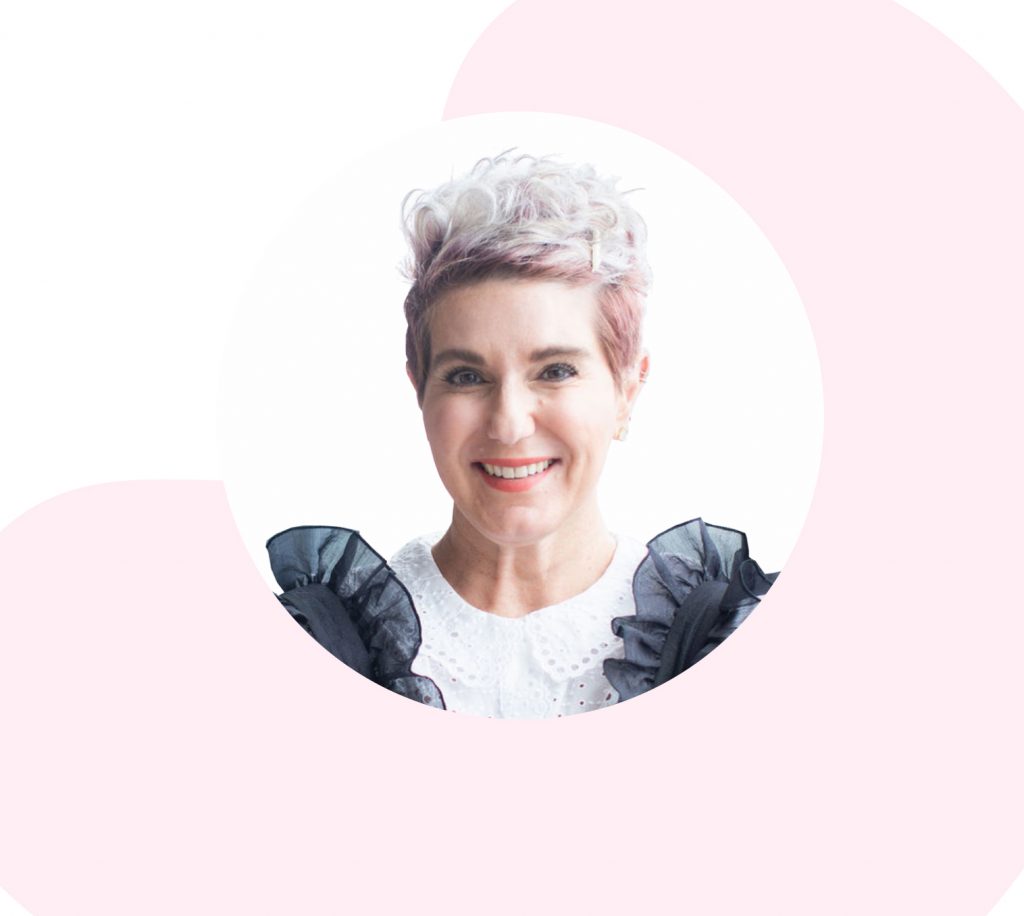
Leanne Elich, CEO at Leanne Elich Consulting, is an award-winning Psychology-driven Business Strategist and Sales Psychologist, Author of Solving the Sales Equation, and creator of the 'School of Mind' Academy. She is one of Australasia's most successful Technology Business Executives and leading expert in high performance sales teams, with over 25 years' global experience in both clinical and corporate environments.
